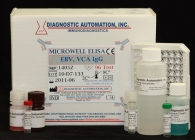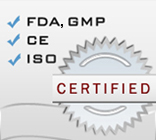
ELISA Kits
- • Anemia ELISA kits
- • Allergy ELISA kits
- • Autoimmune Disease kits
- • Bone Metabolism ELISA kits
- • Blood bank ELISA kits
- • Cancer ELISA kits
- • Cardiac Markers ELISA kits
- • Diabetes Assays ELISA kits
- • Drug test ELISA kits
- • Fertility ELISA kits
- • Food ELISA kits
- • Infectious Disease ELISA kits
- • Other ELISA Kits
- • Parasitology ELISA kits
- • Steroid ELISA kits
- • Thyroid ELISA kits
Rapid Tests
- • Allergy Rapid tests
- • Bone Metabolism
- • Cancer Rapid tests
- • Cardiac markers Rapid tests
- • Drug Tests
- • Fertility Rapid tests
- • Hepatitis Panel
- • Infectious Disease & other tests
- • Other
- • Ovulation Rapid tests
- • Pregnancy tests
- • Urine Reagent Strips tests
IFA Kits
Chemiluminescence Immuno Assays
- • Allergy Assays
- • Autoimmune Thyroid Assays
- • Cardio-Vascular Monitoring
- • Diabetes Assays
- • Fertility Assays
- • Growth Deficiency
- • Infectious Disease Assays
- • Others
- • Steroid Assays
- • Thyroid Assays
- • Tumor Marker Assays
Serology Tests
- • ASO (Anti-Streptolysin-O)
- • CRP (C-Reactive Protein)
- • Mono (Infectious Mononucleosis)
- • RF (Rheumatoid Factor)
- • RPR (Rapid Plasma Reagin)
- • SLE (Systemic Lupus Erythematosus)
Instrumentation



Epstein Barr Virus VCA IgG (EBV, VCA IgG) ELISA kit
| Name |
Epstein Barr Virus VCA IgG (EBV, VCA IgG) ELISA Test |
|---|---|
| Full name |
Human Epstein Barr Virus VCA IgG (EBV, VCA IgG) ELISA Test Kit |
| Category Name | Infectious Disease ELISA kits |
| Test | 96 |
| Method | ELISA method: Enzyme Linked Immunosorbent Assay |
| Principle | ELISA principle- Indirect; Antigen Coated Plate |
| Detection Range | Qualitative elisa assay- Positive, Negative and Cut-off |
| Sample | 10ul serum |
| Specificity | 100% |
| Sensitivity | 100% |
| Total Time | ~75 min |
| Shelf Life | 12 months from the manufacturing date |
 |
 |
 |
Epstein Barr Virus VCA IgG (EBV, VCA IgG) ELISA kit description:
Diagnostic Automation The ELISA Epstein-Barr Virus Viral Capsid Antigen (EBV-VCA) IgG Test System is an enzyme-linked immunosorbent assay (ELISA) designed for the qualitative detection of IgG class antibodies to Epstein-Barr Virus Viral Capsid Antigen in human serum.
Materials Provided with EBV VCA IgG ELISA kit:
1. Microwell strips: inactivated EBV-VCA antigen coated wells
2. Sample Diluent
3. Calibrator
4. Negative Control
5. Positive Control
6. Conjugate: Conjugated HRP-goat anti-human IgG
7. TMB Enzyme Conjugate
8. Wash Buffer Concentrate (10X)
9. Stop Solution
Materials required but not provided:
1. Freshly distilled or deionized water
2. Dispensing system and/or pipette
3. EIA kit Microplate washer
4. EIA kit Microplate Reader with 450nm wavelength
EBV-VCA IgG ELISA Test Background Information:
EBV is classified as a member of the herpes-virus family based upon its characteristic morphology. EBV infection may demonstrate a wide spectrum of clinical symptoms. The majority of primary EBV infections is transmitted via saliva, occurs during childhood, and is subclinical. Antibody titers to specific EBV antigens correlate with different stages of IM. Both IgM and IgG antibodies to the viral capsid antigen (VCA) peak 3 to 4 weeks after primary EBV infection. IgM anti-VCA declines rapidly and is usually undetectable after 12 weeks. IgG anti-VCA titers decline slowly after peaking but last indefinitely. Antibodies to EBV nuclear antigen (EBNA) detected by anti-complement immunofluorescence develop from 1 month to 6 months after infection; and, like anti-VCA, persist indefinitely. Antibodies to EBNA indicate that the EBV infection was not recent. Antibodies to EA may appear transiently for up to three months or longer during the acute phase of IM in 85% of patients. Elevated levels of anti-EA and IgG anti-VCA may be detected in patients with chronic or recurrent illness suspected of being caused by EBV. However, a diagnosis of chronic EBV should not be based on the presence of antibodies to EA since elevated anti-EA titers may also be found in patients with other diseases as well as in healthy individuals with past EBV infections.
EBV-VCA IgG ELISA Test Principle:
Purified EBV-VCA antigen is coated on the surface of microwells. Diluted patient serum is added to wells, and the EBV-VCA IgG specific antibody, if present, binds to the antigen. All unbound materials are washed away. After adding enzyme conjugate, it binds to the antibody-antigen complex. Excess enzyme conjugate is washed off, and TMB Chromogenic substrate is added. The enzyme conjugate catalytic reaction is stopped at a specific time.
For more information about ELISA Kits, Rapid Tests, IFA Kits, CLIA Test Kits, or Serology tests, please see our website home page, or contact our Customer Service Representative at 818-591-3030.
Screening for the presence of antibodies to VCA and related antigens of EBV can provide important information for the diagnosis of EBV infection. Indirect immunofluorescence has been the serologic method most commonly used to detect antibodies to EBV antigens. However, the ELISA procedure, first described by Engvall and Perlman , may be a sensitive and reliable method for detection of antibodies to EBV antigens. The ELISA procedure allows an objective determination of antibody status based on a single dilution of the test specimen and is suitable for screening large numbers of patient samples.
ELISA kits - Rapid tests- Drug tests- Pregnancy test - IFA kits - CLIA assays - Serology tests - Instrumentation
©1992 Diagnostic Automation/Cortez Diagnostics Inc. All rights reserved.








